Themed collection Horizons Community Board Collection: Solar Energy Conversion

Horizons Community Board collection: solar energy conversion
A themed collection on solar energy conversion, guest edited by Materials Horizons Community Board members Rebecca Gieseking and Alexandra Ramadan and Nanoscale Horizons Community Board member Jungki Ryu.

Nanoscale Horiz., 2021,6, 839-841
https://doi.org/10.1039/D1NH90041B
A current overview of the oxidative desulfurization of fuels utilizing heat and solar light: from materials design to catalysis for clean energy
The design strategy and synthesis approach impact the physico-chemical properties, catalytic performances and reaction pathways of ODS catalysts.
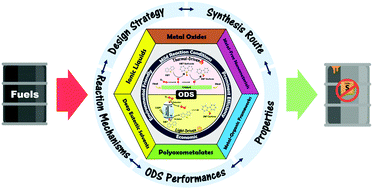
Nanoscale Horiz., 2021,6, 588-633
https://doi.org/10.1039/D1NH00127B
Recombination junctions for efficient monolithic perovskite-based tandem solar cells: physical principles, properties, processing and prospects
Here, we review the physics and the technology of the recombination junction in perovskite-based tandem solar cells, with a summary of the most successful works.
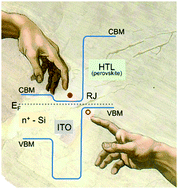
Mater. Horiz., 2020,7, 2791-2809
https://doi.org/10.1039/D0MH00990C
Implementation of ferroelectric materials in photocatalytic and photoelectrochemical water splitting
This review unravels the interaction of PC and PEC water splitting with interfacial ferroelectric polarization.
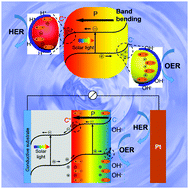
Nanoscale Horiz., 2020,5, 1174-1187
https://doi.org/10.1039/D0NH00219D
Plasmonic hole ejection involved in plasmon-induced charge separation
Hot hole ejection from the resonance sites of plasmonic nanoparticles on a semiconductor or an electrode enables oxidation at more positive potentials, output of higher voltage, and site-selective photo-oxidation beyond the diffraction limit.
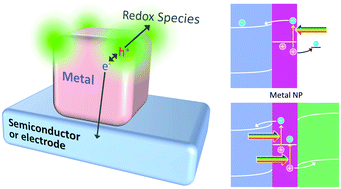
Nanoscale Horiz., 2020,5, 597-606
https://doi.org/10.1039/C9NH00649D
It's a trap! On the nature of localised states and charge trapping in lead halide perovskites
The recent surge of scientific interest for lead halide perovskite semiconductors and optoelectronic devices has seen a mix of materials science sub-fields converge on the same “magical” crystal structure.
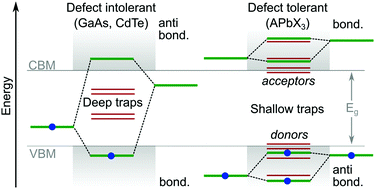
Mater. Horiz., 2020,7, 397-410
https://doi.org/10.1039/C9MH00500E
Designing conjugated porous polymers for visible light-driven photocatalytic chemical transformations
A review on the recent developments in controlling the structural, photophysical and electronic properties of conjugated porous polymer (CPP) photocatalysts is presented.
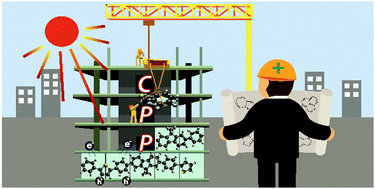
Mater. Horiz., 2020,7, 15-31
https://doi.org/10.1039/C9MH01071H
Theory-guided materials design: two-dimensional MXenes in electro- and photocatalysis
A critical review on how theory-guided materials design can enhance MXene based catalyst discovery and development process.
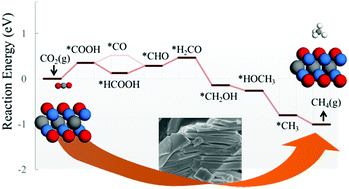
Nanoscale Horiz., 2019,4, 809-827
https://doi.org/10.1039/C9NH00100J
NIR light-activated upconversion semiconductor photocatalysts
The latest developments of NIR light-activated upconversion photocatalysts, and the in-depth mechanisms, prospects and remaining challenges with respect to fundamental investigations and solar energy conversion applications are discussed comprehensively.
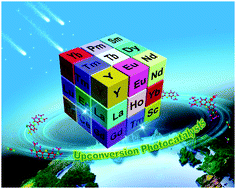
Nanoscale Horiz., 2019,4, 10-25
https://doi.org/10.1039/C8NH00154E
Selective visible-light driven highly efficient photocatalytic reduction of CO2 to C2H5OH by two-dimensional Cu2S monolayers
Low limiting potential, high product selectivity, strong visible light absorbance and satisfactory band edge positions make Cu2S monolayers a very compelling photocatalyst for CO2 reduction.
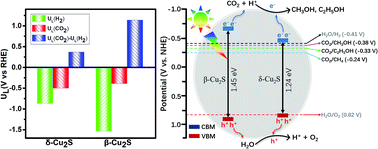
Nanoscale Horiz., 2021,6, 661-668
https://doi.org/10.1039/D1NH00196E
Linking optical spectra to free charges in donor/acceptor heterojunctions: cross-correlation of transient microwave and optical spectroscopy
Quantitative cross-correlation of time-resolved spectroscopies in the visible/near-IR and microwave regions provides deeper understanding of photoinduced charge separation across donor/acceptor heterojunctions than either technique alone.
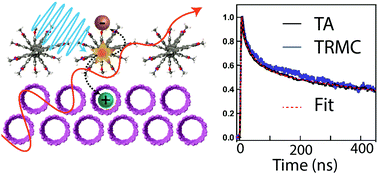
Mater. Horiz., 2021,8, 1509-1517
https://doi.org/10.1039/D0MH01810D
Selective photocatalytic production of CH4 using Zn-based polyoxometalate as a nonconventional CO2 reduction catalyst
We report the synthesis of Zn-based polyoxometalate (ZnPOM) and its application in photocatalytic CO2 reduction to CH4.
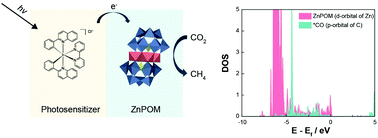
Nanoscale Horiz., 2021,6, 379-385
https://doi.org/10.1039/D0NH00657B
Self-assembled Janus plasmene nanosheets as flexible 2D photocatalysts
A 2D flexible photocatalyst has been designed based on Janus plasmene nanosheets for continuous solar-to-chemical conversion.

Mater. Horiz., 2021,8, 259-266
https://doi.org/10.1039/D0MH01275K
Surface domain heterojunction on rutile TiO2 for highly efficient photocatalytic hydrogen evolution
Single-crystal rutile TiO2 nanorod-assembled radial microspheres with surface domain heterojunctions exhibit excellent photocatalytic hydrogen evolution due to the in situ formation of chemisorbed chlorine leading to surface reconfiguration.
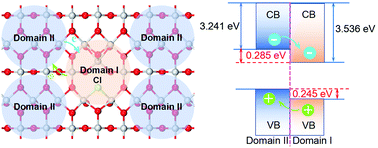
Nanoscale Horiz., 2020,5, 1596-1602
https://doi.org/10.1039/D0NH00491J
Strategies to reduce the dynamic disorder in molecular semiconductors
The dynamic disorder is known to be one of the crucial parameters limiting the charge carrier transport in molecular semiconductors and a parameter that cannot be easily controlled through known design rules.
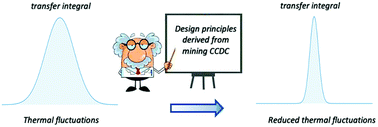
Mater. Horiz., 2020,7, 2922-2928
https://doi.org/10.1039/D0MH01159B
Enhanced charge separation and photocatalytic hydrogen evolution in carbonized-polymer-dot-coupled lead halide perovskites
This work demonstrates that carbonized polymer dots (CPDs) can efficiently promote the charge separation and photocatalytic performance of metal halide perovskites, highlighting their excellent charge-transfer ability and great potential in developing efficient perovskite-based hybrid photocatalysts.

Mater. Horiz., 2020,7, 2719-2725
https://doi.org/10.1039/D0MH00955E
Effect of alkaline earth metal chloride additives BCl2 (B = Mg, Ca, Sr and Ba) on the photovoltaic performance of FAPbI3 based perovskite solar cells
Divalent cation-containing alkaline earth metal halides BCl2 (B = Mg, Ca, Sr, Ba) are used as additives in precursor solutions, where addition of MgCl2 improves photovoltaic performance of FAPbI3 based perovskite solar cell.
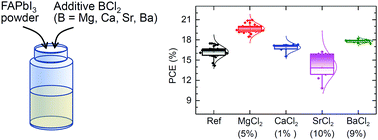
Nanoscale Horiz., 2020,5, 1332-1343
https://doi.org/10.1039/D0NH00263A
Meta-analysis: the molecular organization of non-fullerene acceptors
The chemical structure of a molecule influences the molecular conformation in the solid-state affecting the crystal packing, which in turn drives the charge carrier transport anisotropy.
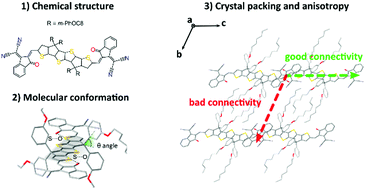
Mater. Horiz., 2020,7, 1062-1072
https://doi.org/10.1039/C9MH01439J
The mechanism of universal green antisolvents for intermediate phase controlled high-efficiency formamidinium-based perovskite solar cells
Tuning the polarity of green antisolvents (using various ethers) allows high control over the purity of the intermediate phase of triple-cation lead halide perovskite thin films.
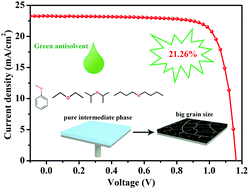
Mater. Horiz., 2020,7, 934-942
https://doi.org/10.1039/C9MH01679A
All-weather-available, continuous steam generation based on the synergistic photo-thermal and electro-thermal conversion by MXene-based aerogels
An all-weather steam generation system is achieved based on the alternative photo-thermal and electro-thermal conversion of crosslinked MXene aerogels.
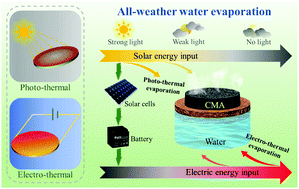
Mater. Horiz., 2020,7, 855-865
https://doi.org/10.1039/C9MH01443H
Microsecond charge separation at heterojunctions between transition metal dichalcogenide monolayers and single-walled carbon nanotubes
Heterojunctions of transition metal dichalcogenide monolayers and single-walled carbon nanotubes are promising for photocatalysis and photocurrent generation, with microsecond timescale charge separation and sub-picosecond interfacial charge transfer.
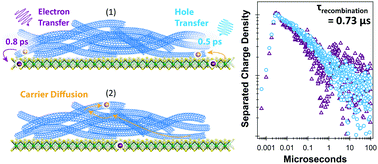
Mater. Horiz., 2019,6, 2103-2111
https://doi.org/10.1039/C9MH00954J
Enzyme-inspired flavin–polydopamine as a biocompatible nanoparticle photocatalyst
Hybrid flavin–polydopamine nanoparticles combine the activity of an enzyme cofactor with the stabilising and electron-transfering properties of nanostructured poly-dopamine to afford a green and biocompatible catalytic system tuneable by visible light.
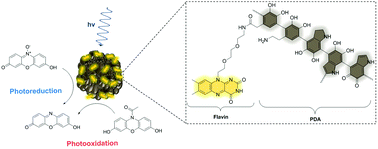
Nanoscale Horiz., 2019,4, 1318-1325
https://doi.org/10.1039/C9NH00199A
A quadruple-band metal–nitride nanowire artificial photosynthesis system for high efficiency photocatalytic overall solar water splitting
First demonstration of a quadruple-band InGaN nanowire photocatalyst for overall water splitting with an STH efficiency >5%.
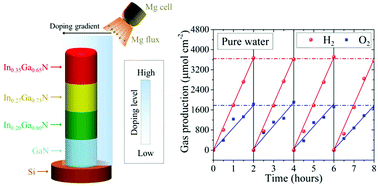
Mater. Horiz., 2019,6, 1454-1462
https://doi.org/10.1039/C9MH00257J
A colloidal heterostructured quantum dot sensitized carbon nanotube–TiO2 hybrid photoanode for high efficiency hydrogen generation
A photoelectrochemical device based on a TiO2/QD–MWCNT (0.015 wt%) hybrid photoanode yields 40% higher photocurrent density than the control device.

Nanoscale Horiz., 2019,4, 404-414
https://doi.org/10.1039/C8NH00227D
Combining electronic and structural features in machine learning models to predict organic solar cells properties
Combining electronic and structural similarity between organic donors in kernel based machine learning methods allows to predict photovoltaic efficiencies reliably.
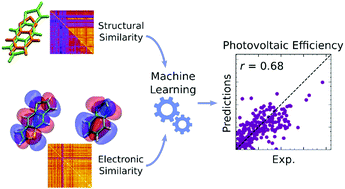
Mater. Horiz., 2019,6, 343-349
https://doi.org/10.1039/C8MH01135D
About this collection
Guest Edited by Materials Horizons and Nanoscale Horizons Community Board members Rebecca Gieseking (Brandeis University, USA), Alexandra Ramadan (University of Oxford, UK) and Jungki Ryu (Ulsan National Institute of Science and Technology, Republic of Korea).
The efficient conversion of solar energy to various forms has long been an ultimate goal of scientists and engineers to realize a sustainable and carbon-neutral society. Two of the most important solar energy conversion technologies are photovoltaics, which convert solar energy into electrical energy, and photocatalysts, which use solar energy to induce chemical reactions, often to produce fuels. These two approaches to harnessing solar energy share many common features, from fundamental photophysical and photochemical processes to device architectures to areas of ongoing challenges and development. As a result, they are complementary approaches to effectively use the practically unlimited but intermittent solar energy. In this themed collection, we have compiled articles that address fundamental issues and current challenges in photovoltaics and photocatalysis that provide insight into the development of innovative solar energy conversion devices.